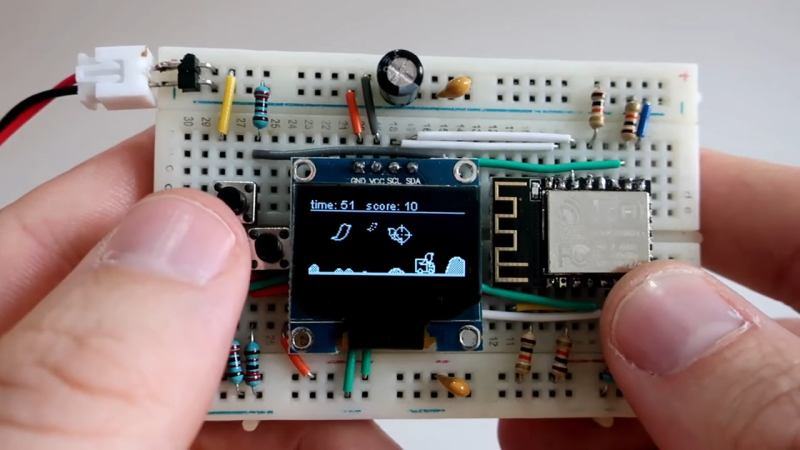Unless you’ve held on to an old tube TV, did the hack that lets you use a light gun with an LCD via Wiimote receiver and a couple of microcontrollers, or live close to one of those adult arcades, you might be really jonesing to play Duck Hunt by now. It’s time to renew that hunting license, because [Danko] has recreated the game for NodeMCU boards, and it’s open season.
Instead of ducks, you get to shoot cute little Twitter-esque birds of varying sizes and point values, and a tiny cab-over truck if you wish. There’s a 60-second free-for-all, and then time is up and your score is displayed. As a special bonus, there’s no smug dog to laugh at you if don’t hit anything. Be sure to check out the demo and build video after the break.
This pocket console lives on a nicely-wired breadboard for now while [Danko] works on a custom PCB. He’s also planning to add support for Arduboy games in the future, and maybe a joystick instead of a D-pad of buttons.
There are a lot of myths floating around about how the old CRTs read the NES light gun, but our own [Will Sweatman] shot them down in his fascinating Duck Hunt: Reloaded write-up.















Neat little shooter game there. From reading at the beginning I was expecting some sort of light gun implementation on the board instead of button controls. It’s still always cool to see people making classics on current tech. Adding arduboy support is awesome. I’ve been wanting to try my hand at writing some simple demos/games on the platform
Do I see time-dithered grayscale on a B&W display? (I don’t have audio at the moment so I van’t verifu with the video)
Also do people actually know that these so-called ‘SSD1306’ displays actually accept most of the SSD1316 commands, like rotation, fade, etc?
I think it’s a checkerboard pattern for greyscale.
I2C is practically too slow for PWM grayscale. You *can* do it, but:
If all you do is transfer the display data you get under 48 screen updates per second.
To do a 1/3 + 2/3 PWM for 4-levels greyscale you’re down to 16 screen updates per seconds if all you’re doing is updating the screen.
That gives us a 16Hz PWM flicker for the 1/3rd and 2/3rd grey levels.
It’d be awful and might end up causing quite a few people to end up on the floor doing their best impression of a Magikarp.
Correction, 2/3rd of the time spent updating the screen, and 1/3rd the CPU can do something else: during the 2/3rd-long PWM phase only 1/3rd of the time is spent sending the data, 1/3rd is free if you use a timer to do something else with the CPU.